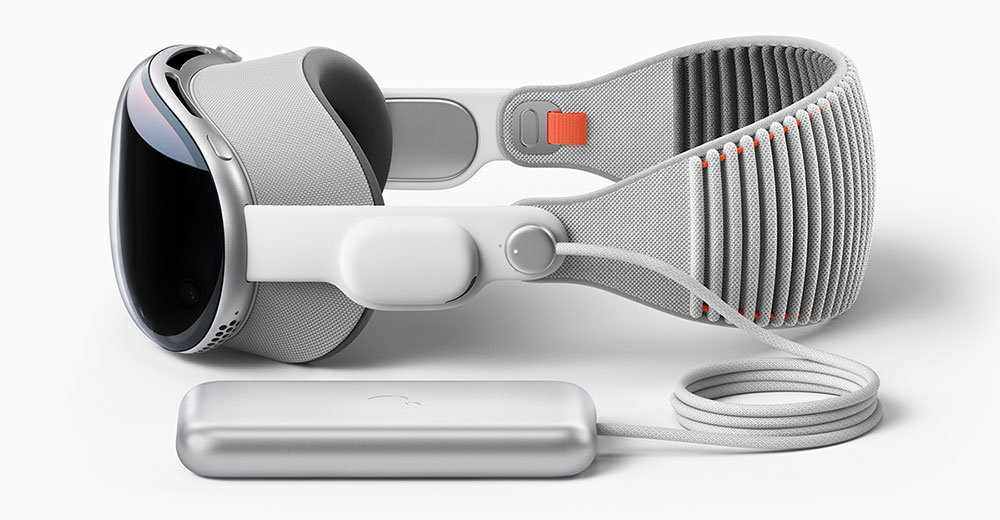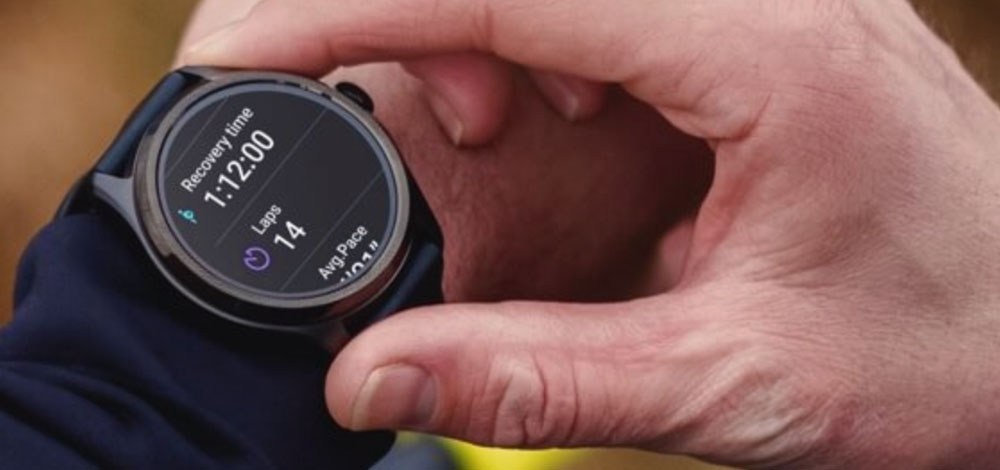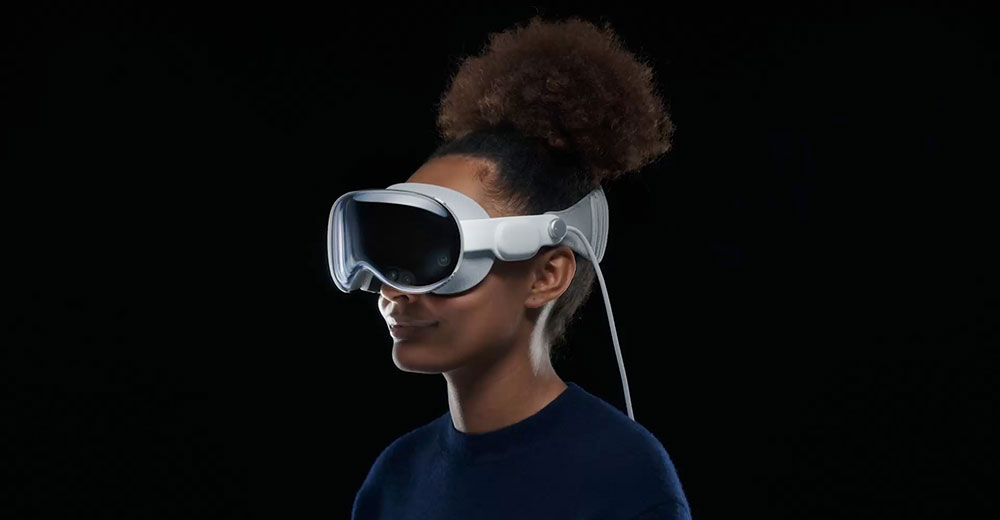I have my doubts about whether Apple’s Vision Pro, which was announced last week but will not be available until 2024, will be successful.
My doubts mostly revolve around Apple’s current strategy, which is to avoid collapsing existing markets, something Apple had to do to make the iPhone successful, and because the company partners poorly and will need a lot of focused partners to make this product work.
But one thing is certain: the announcement of this head-mounted display just made it real. There is a significant potential revenue opportunity for someone, including Apple, to make a huge splash with this very disruptive and potentially revolutionary way to interface with technology.
Don’t get me wrong; there is little about the hardware that isn’t impressive. It’s Apple’s current marketing approach that opens it up to the kind of competitive challenge it didn’t face with the iPod or iPhone.
Let’s talk about the Apple Vision Pro this week. Then we’ll close with my new favorite smartwatch: the TicWatch Pro 5, which comes as close to the Apple Watch as any smartwatch I’ve tested.
Can’t Fault the Design
Apple Vision Pro is a well-designed product, but if all it took to create a successful offering were a good design, then the French Citroen would be the most popular car in the world rather than a brand that is mostly only known in France.
The Vision Pro is about as close to a no-compromise, head-mounted computer system as we have seen.

Vision Pro headset and battery pack. (Image Credit: Apple)
Yes, it has new hardware and software and doesn’t yet have a robust ecosystem, but neither did the iPhone or especially the iPod at the start, and both were massively successful.
Vision Pro’s high resolution and superior ergonomic design make other AR and VR products look archaic by comparison. While the $3,499 price is in nose-bleed territory, it is generally better to first release a high-quality, exclusive product than to do what Facebook and Microsoft did and release products that hit attractive price points around $500 but were sub-standard in quality.
If you initially set a high bar and cost-reduce it with a focus on the experience of a few, then you build a potential market foundation for what could be an iPhone- or iPod-like market success. Tesla is an example of this. Its cars were exclusive and initially priced high, but with outstanding performance and utility, then cost reduced to make that company massively successful. Tesla is about as close to the Apple model as you’ll get outside of Apple.
While I’d prefer the Vision Pro in black, it does have some nice utility, and it isn’t wedded to the metaverse, which is good because, while the Nvidia commercial metaverse has been successful, the Meta (Facebook) effort was not.
I use head-mounted displays for entertainment; they are handy when I’m having my teeth cleaned when staring at the office ceiling fan for 45 minutes gets old fast, and I’ve used them to watch movies on airplanes because I don’t like being embarrassed by some of the scenes that are common in the R-rated action movies I like to watch when traveling.
The external battery pack lowers the weight of the Vision Pro device on your head and allows for an easy upgrade to a larger battery pack (its two-hour charge is inadequate) or a plug-in option for plane trips.
In short, there is a lot to love about the Apple Vision Pro, but I doubt I’ll buy one, and that’s because of Apple’s business practices.
Apple’s Market Strategy Missteps
While Steve Jobs certainly made it successful, the iPod had to work with Windows, and the iPhone had to cannibalize the iPod. Current Apple management appears to have forgotten those critical success elements.
The Apple Watch doesn’t work with Android, which limits its total available market (TAM); the iPad never cannibalized the Mac and languished against a more tablet-like Mac; and Apple’s strategy is revenue-, not customer-centric. As a result, you’ll have to buy the Vision Pro in addition to an iPhone and Mac, not as a replacement product that it might otherwise become.
FaceTime is integrated with Vision Pro, but I don’t expect Apple to put phone features into the product, and it’ll be very measured in how it approaches productivity products to protect the Mac. It’s likely to bury you with accessories like a better battery pack that should have been bundled with the product in the first place because a two-hour battery life is too short for a product designed for watching movies or gaming.
Apple also seems to have a view of partners that doesn’t include its partners being profitable. This approach is problematic when building an ecosystem for a new product because, as Meta discovered with its platform, you need many partners to create an ecosystem. However, if those partners believe you’ll take their profits, they won’t be eager to support your new platform.
Finally, Apple interoperates poorly, which means that critical apps from companies like Netflix, Amazon Prime, Microsoft, and anyone but Disney, which is already on board, are likely to either not show up timely or be poorly done and damage the user experience.
One more thing…marketing.
Apple was once a marketing powerhouse. To convince people to embrace a new computing platform, you need a lot of great demand generation marketing like Apple used for the iPod and iPhone. But it hasn’t had a campaign at that scale since Steve Jobs left, and it seems unlikely that will change for this product. Without that marketing heavy lifting, as good as this headset is, it will likely underperform.
Wrapping Up
Apple clearly has a path to success with the very well-designed Vision Pro head-mounted computer. However, to be successful, it’ll need to channel Steve Jobs, fund demand generation adequately, embrace cannibalizing existing products, partner better than it currently does, and interoperate far better with third-party content providers, not just Disney.
If Apple doesn’t do what is necessary with Vision Pro, it may validate a category that a competitor, like Samsung or Lenovo, will take from Apple, just as Apple took the smartphone market from Microsoft, Nokia, Palm, and Research in Motion (BlackBerry).
In short, Steve Jobs’ Apple would have made the Vision Pro a huge success. The jury is out on whether Tim Cook’s Apple can do the same because Cook is over-focused on margins and not focused enough on assuring product success.

TicWatch Pro 5

Qualcomm-based Wear OS watches by Google continue to advance against the once superior Apple Watch, and the TicWatch Pro 5 is the most powerful released so far in its class. At $349, this watch won’t break the bank, but it has Apple Watch-beating capabilities, like a dual-mode display which gives it up to 80 hours of battery life.
This watch is one of the first to use Qualcomm’s Snapdragon W5+ platform. Over the days I’ve been using it, it has been fast and impressively performative. With fast charging, you can get to 65% power from zero in 30 minutes (that’s over 40 hours), and 15 minutes gets you over eight hours of battery life.
While it has a touch screen, it also has a rotating crown (the last generation watch lacked this) which allows you to scroll through messages more easily or zoom into images like GPS maps — and the crown works better with gloves than the touch screen does.
Like the Apple Watch, the TicWatch Pro 5 has many sensors. It has 100+ sports modes, built-in GPS, speaker, and microphone so you can take calls on the watch, track sleep patterns, blood oxygen saturation, stress monitoring, 24-hour heart rate monitoring (more accurate with this version), built-in compass/barometer/altimeter, and it’s good for scuba diving down to five atmospheres (around 50 meters or 164 feet).
The TicWatch Pro 5 heart health monitor is impressive, alerting you to high/low resting and exercise heart rates. It has irregular heartbeat (IHB) detection, as well. It reports on VO2 max for aggressive exercise to make sure you don’t harm yourself, and it has a one-tap feature, giving five health metrics at once: heart rate, blood oxygen, respiration, stress, and heart health.
It doesn’t offer a 5G option which means it won’t replace your phone. Still, for those who want Apple Watch capability but don’t want to pay the Apple tax, the TicWatch Pro 5 is an excellent choice — and my Product of the Week.

























































